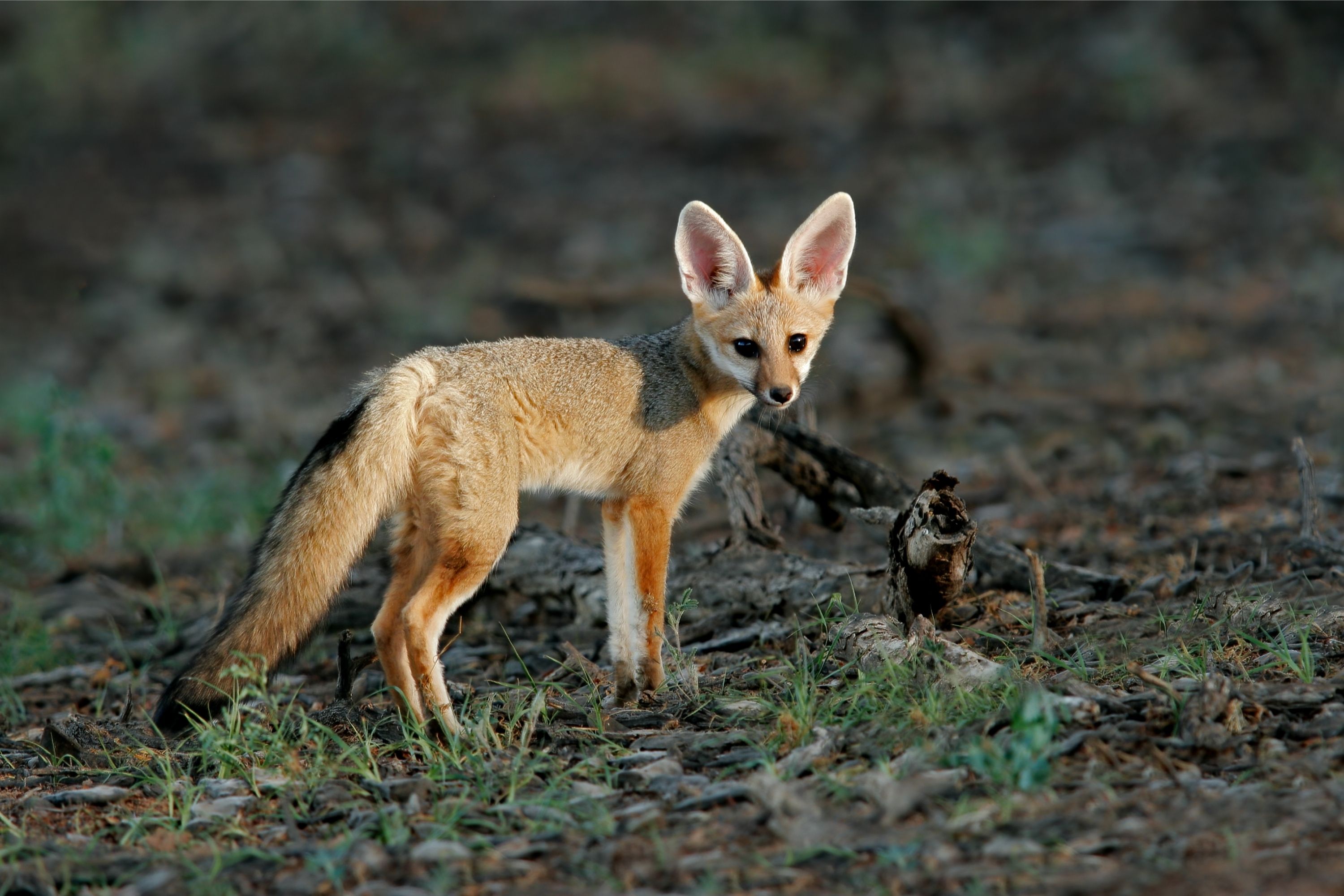Cape fox
(Vulpes chama)

Description
The Cape fox (Vulpes chama), also called the asse, cama fox or the silver-backed fox, is a small species of fox, native to southern Africa. It is also called a South African version of a fennec fox due to its similarly big ears. It is the only "true fox" occurring in sub-Saharan Africa, and it retains primitive characteristics of Vulpes because it diverged early in the evolutionary history of the group. Vulpes chama is a small-built canid, usually measuring 45 to 62 cm (17.5 to 24.5 in) long, not including its tail, which is typically 30 to 40 cm (12 to 15.5 in). It is 30 to 35 cm (12 to 14 in) tall at the shoulder, and usually weighs from 2.5 to 4.5 kg (5.5 to 9.9 lb). The skull is very similar to that of V. bengalensis, although the cranium of V. chama is slightly wider and the maxillary region is slightly shorter. The ears are relatively large and sharp, the muzzle is small and pointed. Pelage colour is silvery-gray, tawny at the back of the ears, with white hairs appearing around the side of the pinna in the center. The colour of the neck and sides is lighter, and the underparts are pale tawny to pale buff. The head is dull red and the lower jaw is dark brown. There are white marks on the throat. The legs are more tawny than the rest of the body. The tail is dense and bushy, and can be silvery, pale fawn, buff with brown or black tips, or dull yellow. The tail tip is always black, and there's a dark spot over the caudal gland. Pelage is soft and composed of a thick wavy underfur of around 25 mm in length. Underfur is covered with a dense layer of guard hair 40 mm in thickness. Molt occurs in the wet season from October to November. V. chama presents little to no sexual dimorphism. Cape fox is the only species in the genus Vulpes that exists in Africa south of the equator. It primarily occupies arid and semi-arid areas, but in sections, such as the fynbos biome of the western Cape Province of South Africa, the species reaches areas of higher rainfall and denser vegetation. In the central and western regions of southern Africa, the species is widespread, reaching around 15 ° N in south-western Angola. It is widespread in Zimbabwe, Botswana, and South Africa, occurring in most parts of the Western and Northern Cape provinces, the Eastern Cape (excluding the southeastern side), the Free State, western and northwestern KwaZulu-Natal and the North-West province. It also occurs in Lesotho, a high mountainous region.
Taxonomic tree:







